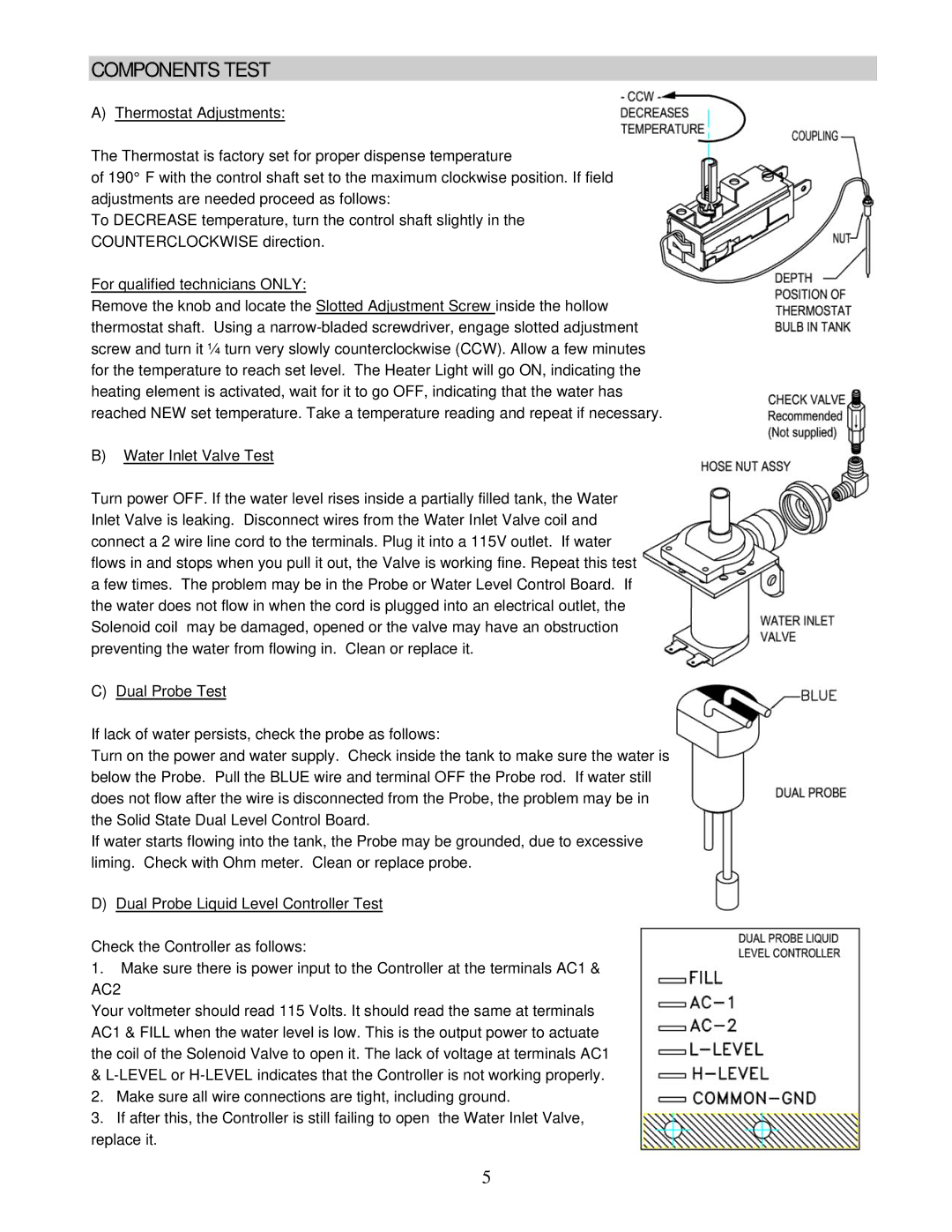GB2HC-CP-PC*, GB2CP, GB2-CP, GB1CP, GB1HC-CP specifications
The Cecilware GB1HC-CP, GB2HC-CP-PC*, GB2HC-CP, GB2-CP, and GB2CP are premier models in the Cecilware line of commercial coffee brewers, designed for high efficiency and quality extraction. These machines cater specifically to the needs of cafés, restaurants, and other food service establishments looking to serve premium coffee to their customers consistently.One of the standout features of the Cecilware GB series is its ability to brew multiple pots of coffee simultaneously. This feature is particularly beneficial during peak business hours, allowing establishments to keep up with high customer demand without compromising on flavor or quality. The GB1HC-CP is a single brewer, while the GB2 models can brew two pots at once, making them ideal for larger operations.
A notable technology utilized in these models is the precision brewing control. This ensures that the water temperature and brew time are consistently maintained at optimal levels, leading to an ideal extraction process that enhances the flavors and aromas of the coffee beans used. This feature minimizes the risk of over-extraction or under-extraction, which can lead to bitter or weak coffee.
Another characteristic that sets the Cecilware GB series apart is its durable construction. Made with high-quality materials, these brewers are built to withstand the rigors of a busy kitchen environment. Their compact design makes them suitable for various countertop configurations without taking up excessive space.
These brewers also feature an intuitive control panel, enabling staff to operate the machines with ease. The ability to adjust brew parameters allows baristas to customize each batch of coffee to meet customer preferences or specific coffee varieties, thereby enhancing the customer experience.
Maintenance is another crucial aspect where these models excel. Each brewer is designed for easy cleaning and servicing, ensuring longevity and consistent performance over time. The stainless steel finish not only contributes to the aesthetics but also makes cleaning straightforward and hassle-free.
In summary, the Cecilware GB1HC-CP, GB2HC-CP-PC*, GB2HC-CP, GB2-CP, and GB2CP models represent a blend of quality, efficiency, and advanced brewing technology tailored for businesses that prioritize coffee excellence. With their ability to brew multiple pots, precision control, durable construction, user-friendly interface, and easy maintenance, these brewers are a fantastic investment for any establishment dedicated to delivering top-notch coffee.

